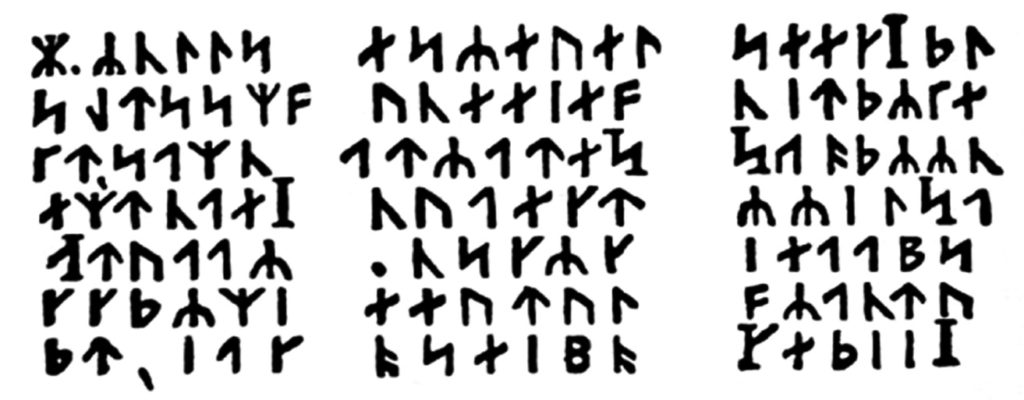
O.B. De Alessi
I didn’t really have a definition of speculative fiction until you made me think about it. I could say that, to me, speculative fiction is any fiction that is created when its author wants to answer questions which can’t be answered in the factual world. Thus, the author has to go somewhere beyond the realm of the factual to find the answers. I keep thinking that it is a process that is rooted in belief. One doesn’t necessarily have to believe in ghosts to write about ghosts — but while writing about them, one has to create a special place where ghosts do exist.
I’ve gravitated towards horror and fantasy fiction since I can remember. It’s a territory that I feel at home in and that I keep coming back to, sometimes unconsciously. There’s nothing like being completely immersed in a horror book and letting yourself truly believe what you’re reading. There’s nothing like experiencing that kind of fear — which is very real, as it is felt in your guts — but it is also pleasant, comfortable and, looking back at it, incredibly inspiring. It’s something that happens often when you’re a child, less so as an adult. I think this is what I find most inspiring about speculative fiction. That it offers to take the reader or the viewer on a journey to worlds where anything can happen and where, for this reason, one can feel much freer. It’s a bit like dreaming. Without the filter of reality imposing over them, emotions are channeled in a much more extreme and creative way.
One example of speculative fiction that has changed my way of thinking would definitely be Dante’s Divina Commedia. Apart from just being an incredible work of literature — and I will assume you all know what it is about —I find it incredibly inspiring on a structural level. Speaking of books that take you on a journey, this narrative epic poem definitely accomplishes that on so many levels. There is an illustration that describes the way the Inferno is laid out. When I’m planning a new project, I seem to have this image almost constantly in my mind. If you haven’t read it, read it (and not just the Inferno!)
As a child one of my favourite activities was to make up characters around which I would create narratives that I then acted out through pretend playing. These characters were often inspired by fictional characters I had either read in books or seen in films. Often, the books or films I was inspired by were of the fantasy or horror kind, as I liked my characters to have some kind of supernatural power. Sometimes I liked them to not be human at all. As an adult, I sort of kept doing the same thing except that I moved on from pretend playing to similar activities that are considered more acceptable for a grown up — such as performance art and film. In my performative work I continued creating characters and worlds that reference — and sometimes even directly quote — other characters and worlds from literature and film. The space that I create through performance art is very fluid and so are my characters — they time travel, space travel, they are gender fluid. In a way, my performative pieces are themselves works of speculative fiction.
Speaking as a filmmaker, my work is incredibly, and probably very obviously so, inspired by speculative fiction, also considering that both of my films, Kuo’s Eyes (2017) and MUDMONSTER (in pre-production) are of the horror/dark fantasy genre. I don’t want to give too much away as the film hasn’t even been shot yet, but especially in the latter there are very specific literary references inherent to the plot all the way through. Still, these days I am actually very much influenced by reality. I love watching documentaries and I always read the news. I actually find that reality is very often crazier and more frightening than fiction.
I would recommend anything by H. P. Lovecraft but it’s highly likely that my friend James Champagne has already covered that area. So I’ll recommend J. M. Barrie’s Peter Pan, Or The Boy Who Wouldn’t Grow Up (1904), which is actually a play. I know most people will probably think, ‘Peter Pan, how boring!’ I invite these people to pick up a copy (there are actually several Peter Pan books, and all of them tell remarkably different and interesting stories — the play is the closest to the story we know from the various film adaptations) and read it. It’s an incredibly dark, allusive, crazy story. Definitely not for kids only. Plus, he can fly! I also recommend Jules Verne’s work in general but especially Journey to the Centre of The Earth (1864) and 20,000 Leagues Under the Sea (1870). I will also recommend The Sandman comic book series by Neil Gaiman. I have not read a ton of comic books, though I like to make my own comic books occasionally, but this one is truly great. One last book, which again can be labelled as mere ‘children’s literature’ but that I think everyone should read at least once in their lives is Watership Down by Richard Adams (1972). It’s amazing how a book about rabbits can be so emotional, sad, angry and make you think so much. The end is devastating.